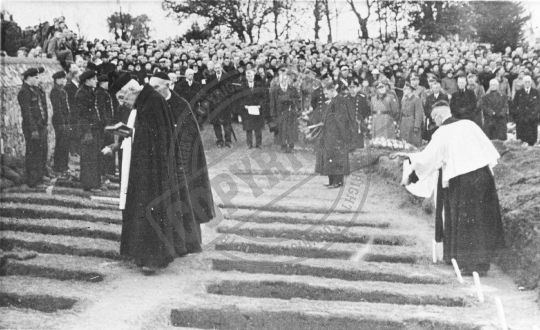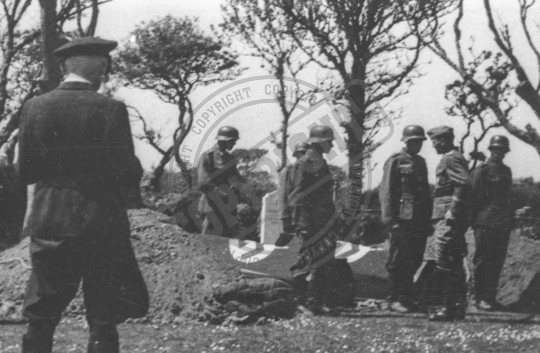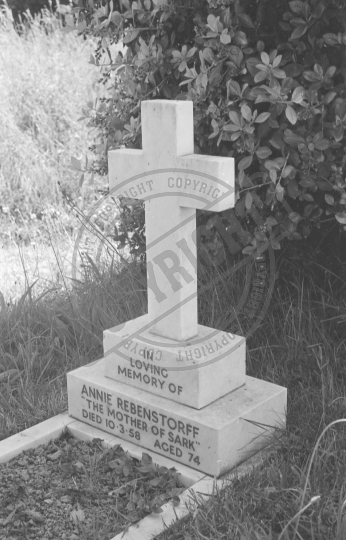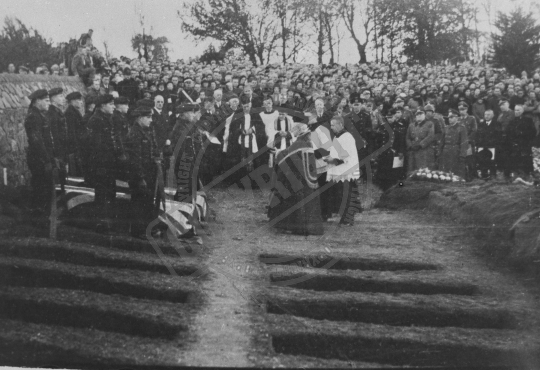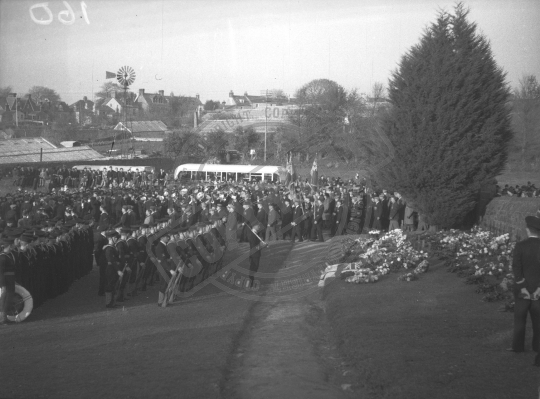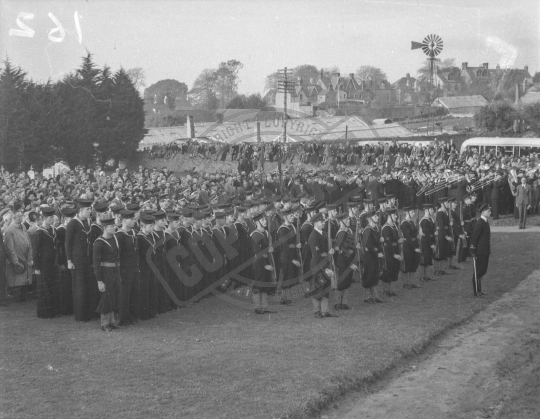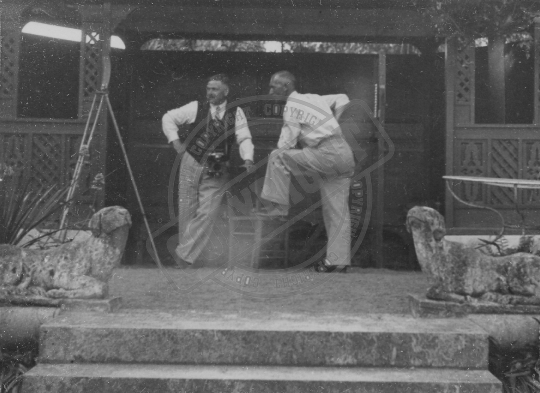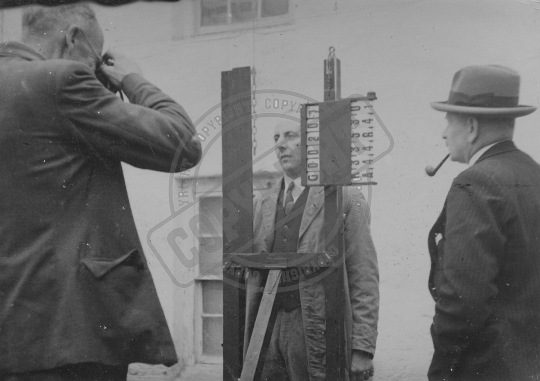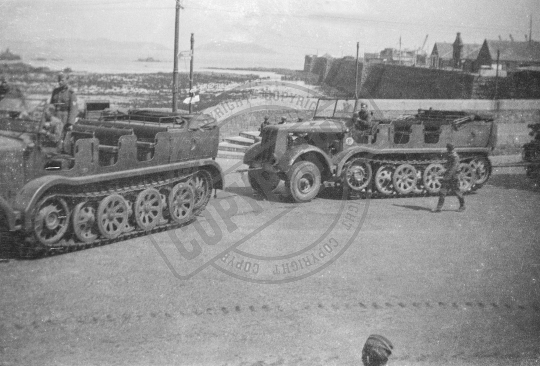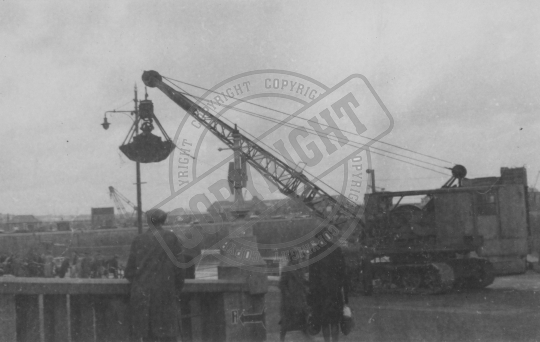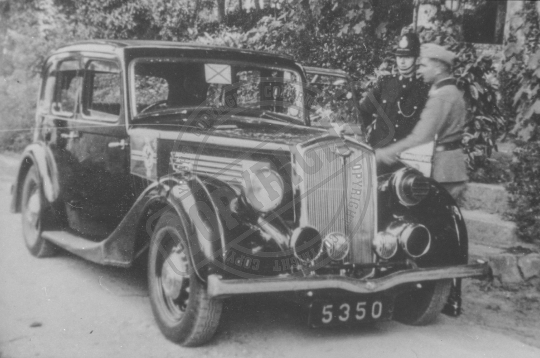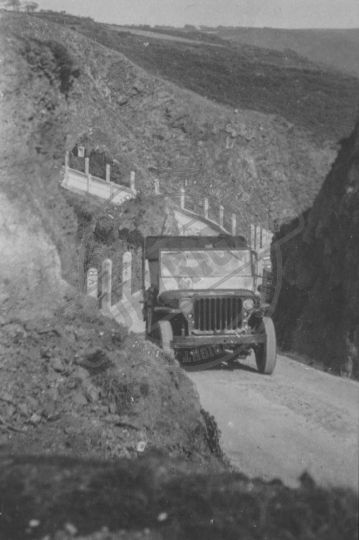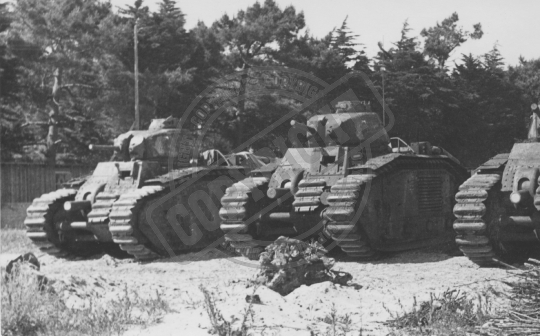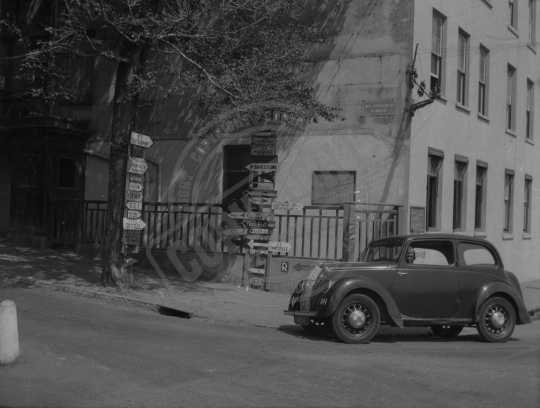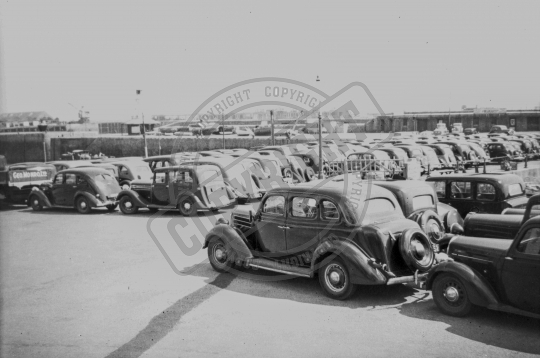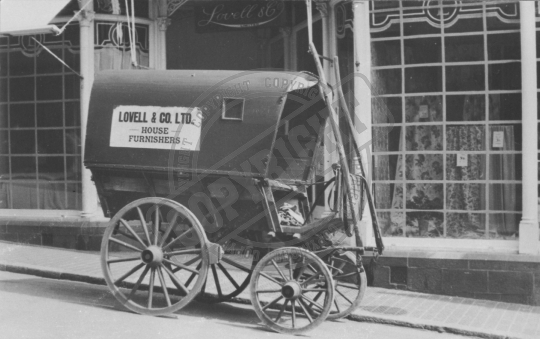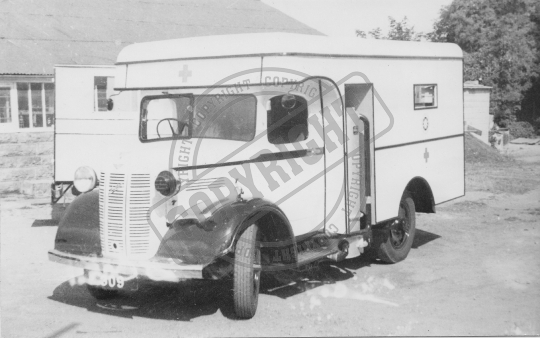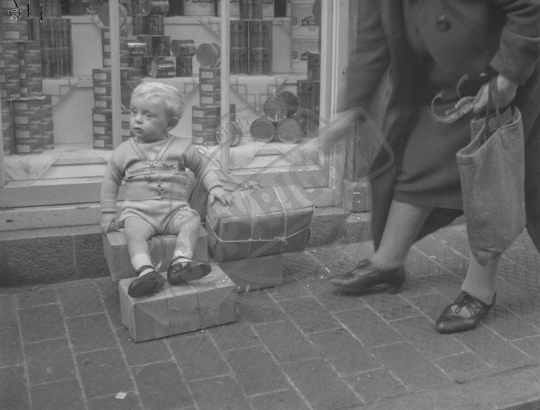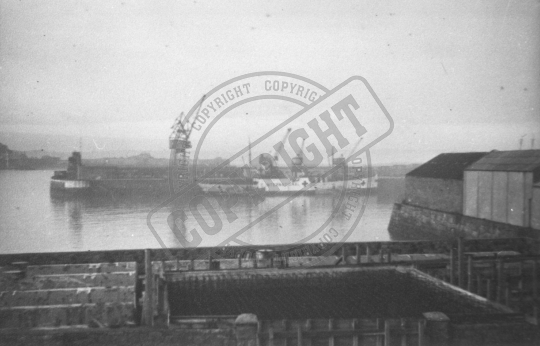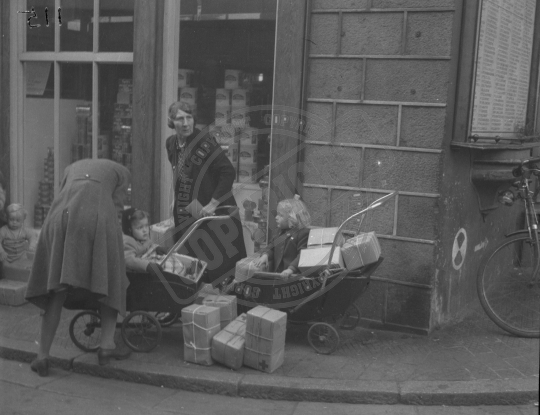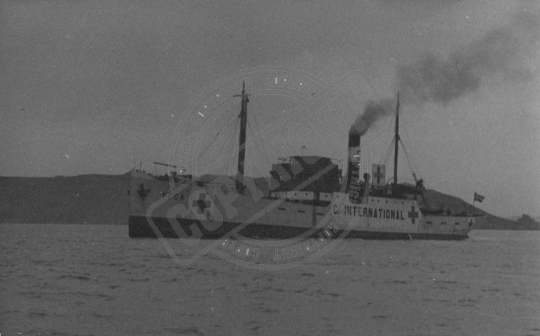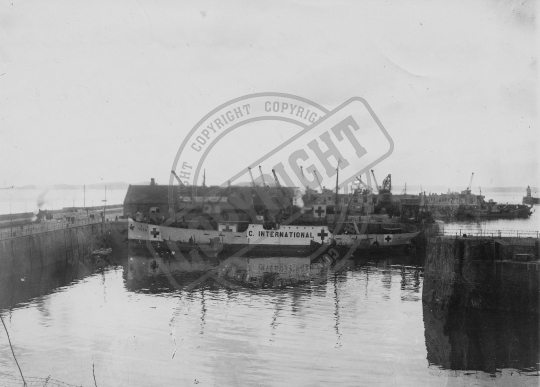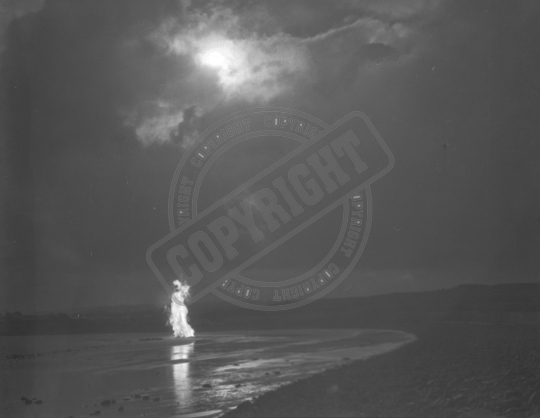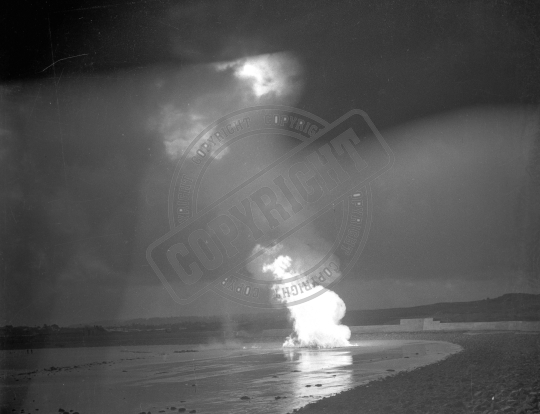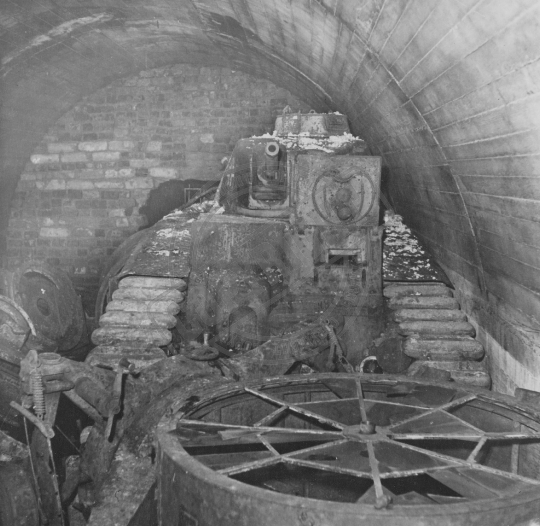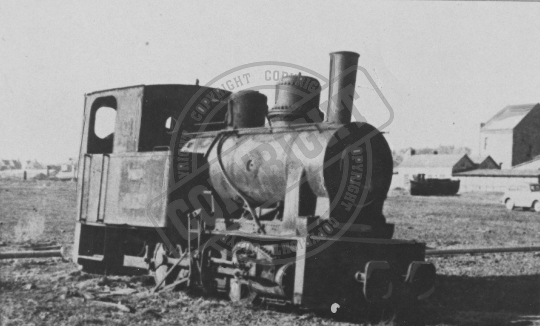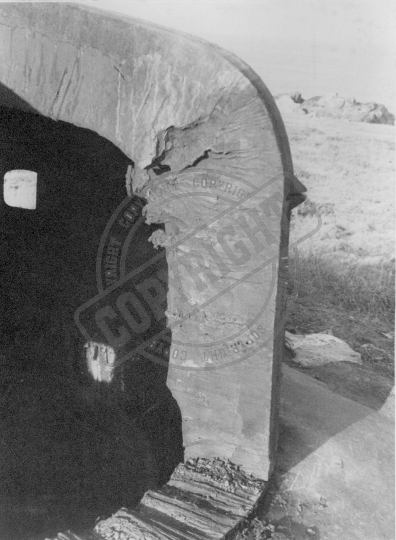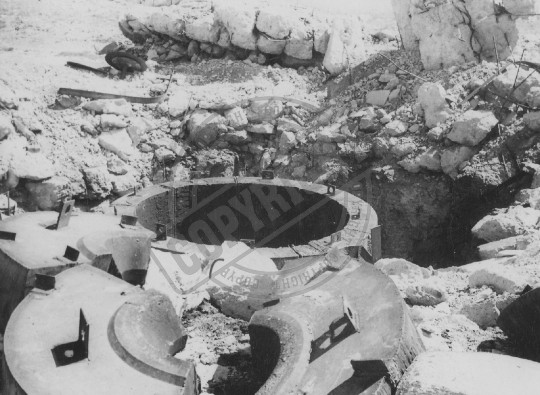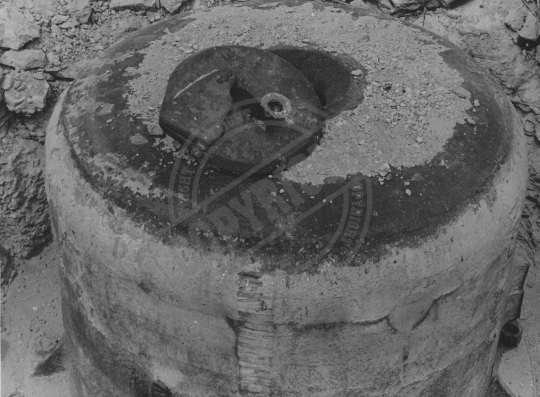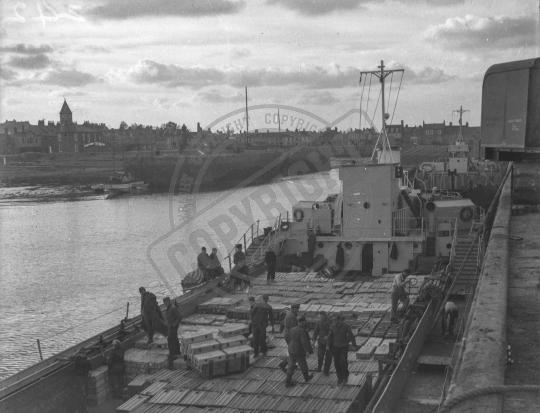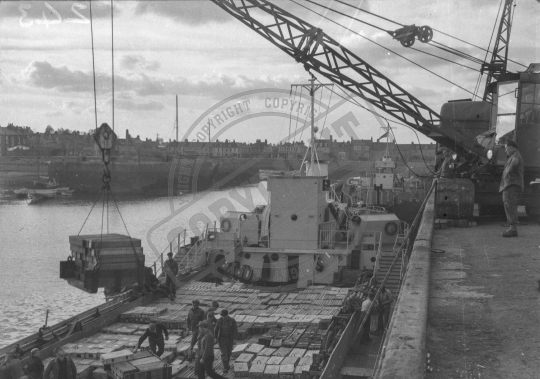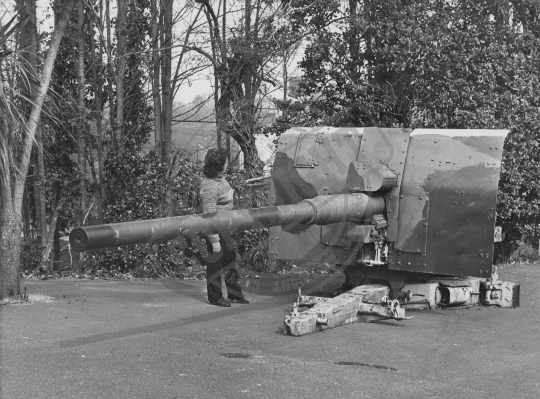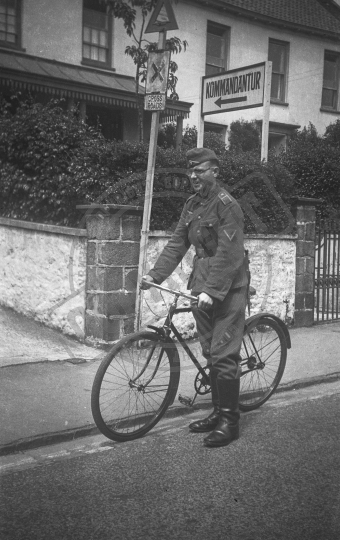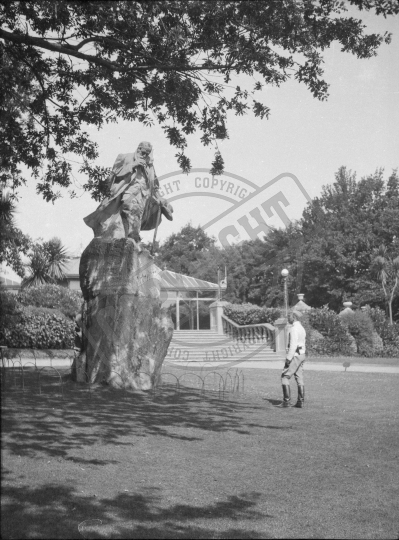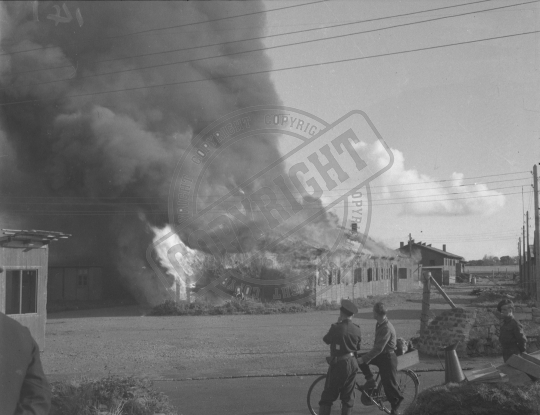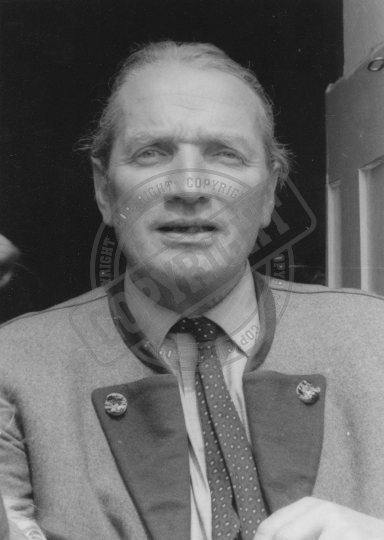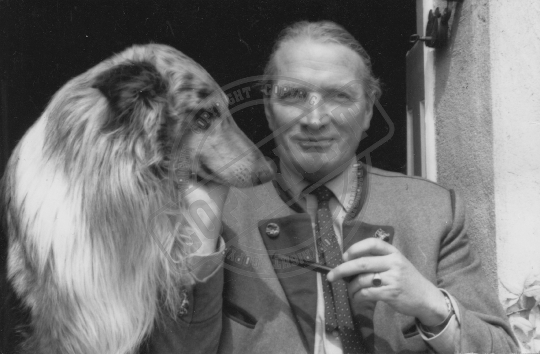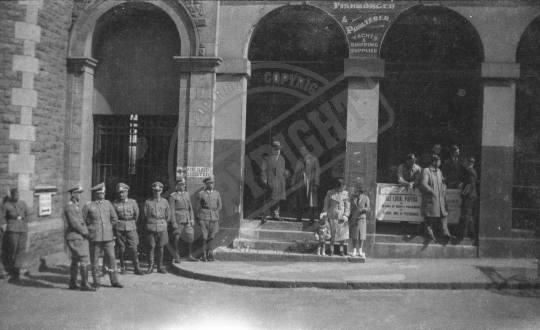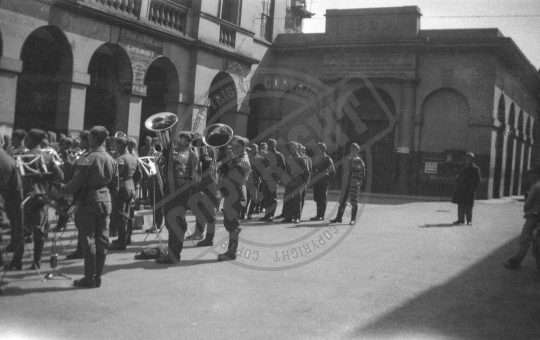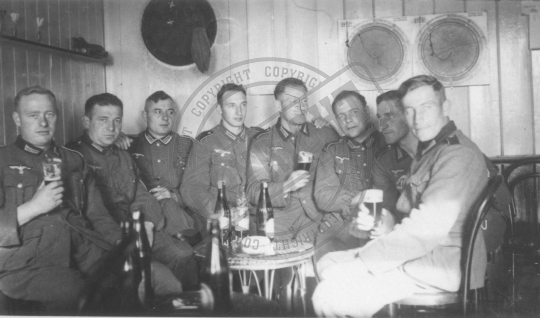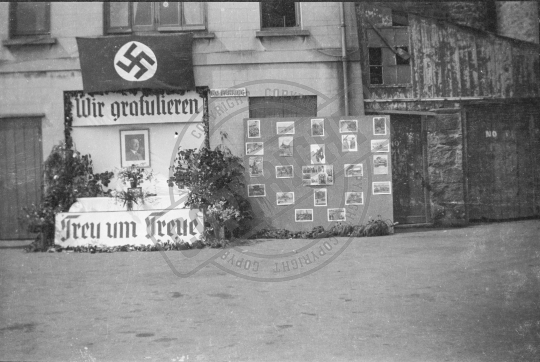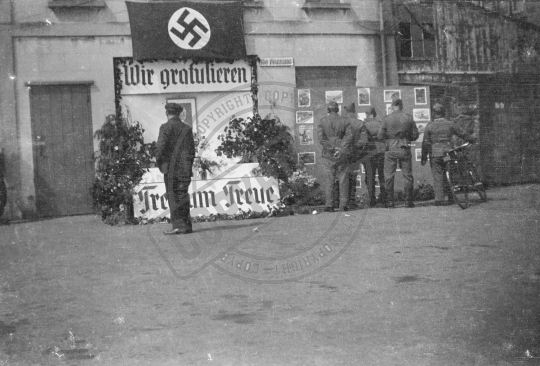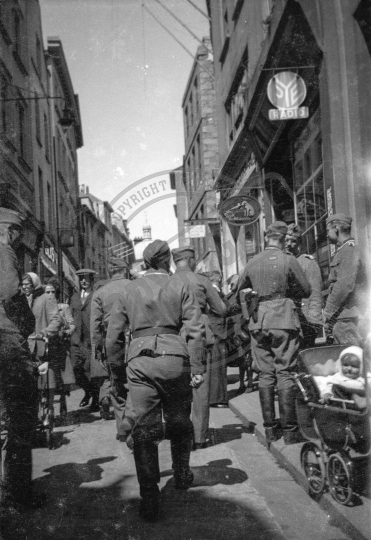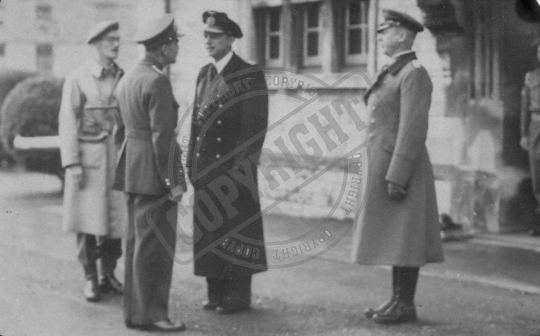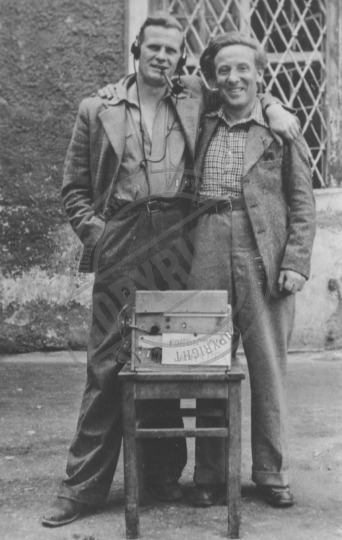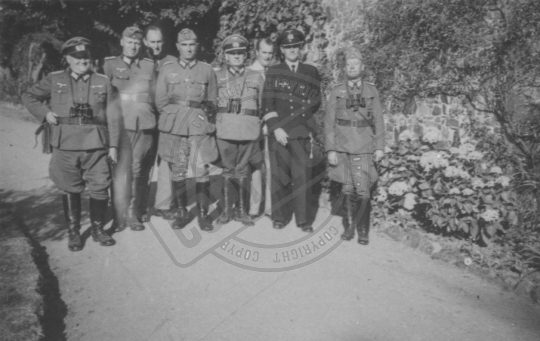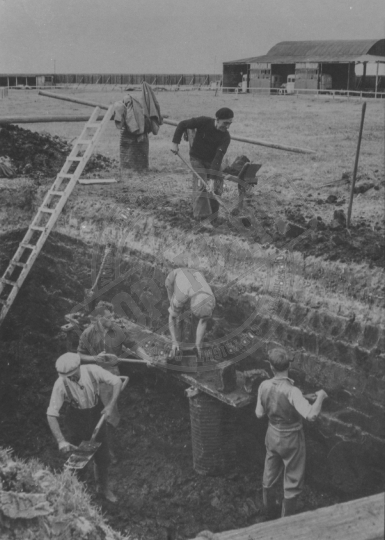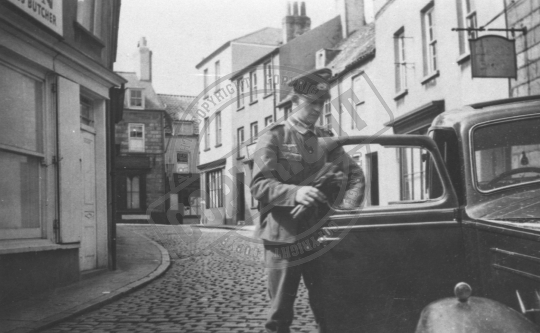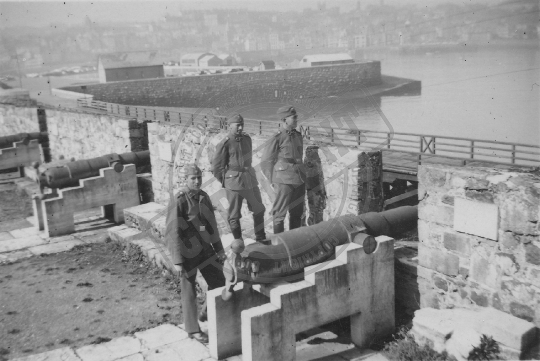Results (329)
TPL_00166
Funeral service for Royal Navy victims of HMS Charybdis and HMS Limbourne who were buried with full military honours at Le Foulon Cemetery.
TPL_00164
Two soldiers who were killed when clearing their own mines immediately after the occupation are buried in the cemetery near St Peters church in Sark.
TPL_00163
Mrs Annie Rebenstorff an English born lady who married a German national and had lived in that country prior to WW1. During the Occupation she was renowned for the work she did to aid islanders in Sark, so much so she was know as 'The Mother of Sark'.
TPL_00162
Funeral service for Royal Navy victims of HMS Charybdis and HMS Limbourne who were buried with full military honours at Le Foulon Cemetery.
TPL_00178
The "photo-census" in progress in the summer of 1941. Charles Toms is shown photographing a subject, with reference number displayed on an easel.
TPL_00381
German half-tracks were linked together and used to transport heavy loads such as the guns of Batterie Mirus. Seen here are at least three vehicles having exited the White Rock turning to ascend St Julians Avenue. Note the damage to the road surface in the forground.
TPL_00380
Heavy construction equipment was used during the building of the fortifications, this crane with fitted with a grab was used during the excavation process. Photographed at the top of the slipway next to the Albert statue, note the road sign painted at the foot of the wall and the 'Antee’ floating crane seen in the background.
TPL_00328
A Guernsey police officer and German chauffeur stand by the Commandants car while he pays a visit to the Little Chapel at Les Vauxbelets, Guernsey.
TPL_00326
French Char bis B1 tanks used by the Germans awaiting shipment from Millbrook, Jersey to France 29th May 1945.
TPL_00322
As the military buildup increased, so did the number of road signs directing German forces to them. Many roads were thoroughly signposted like this example at the bottom of St Julian's Avenue, Guernsey. Note the Guernsey Press Censor in his car.
TPL_00325
The Germans commandeered all but a very few private cars on the island. These were taken to the Albert Pier to await shipment to France.
TPL_00323
This cut down furniture van was transformed into a very efficient ambulance which ran on charcoal gas and was ready for service by September 1942.
TPL_00375
Red Cross parcels being distributed at Le Riches, St Peter Port, Guernsey. They provided a lifeline for the civilian population as everyone was on starvation rations by the winter of 1944 with the first consignment arriving just after Christmas that year.
TPL_00312
The arrival of the Swedish ship SS Vega chartered by the International Red Cross to bring food and supplies to the starving islanders did much to alleviate the suffering of the civilians. Here Red Cross parcels were distributed to the islanders at Les Riches, St Peter Port.
OA_074
The Swedish ship SS Vega, chartered by the International Red Cross to take Red Cross Supplies to the Channel Islands. She is seen here off St Aubin’s Bay after leaving St Helier Harbour on Friday, 11th May, 1945.
OA_014
The Swedish ship SS Vega, chartered by the International Red Cross to take Red Cross Supplies to the Channel Islands, at the London Berth, St Peter Port Harbour, Guernsey. Note German FK vessels moored alongside and trains on the quay.
TPL_00311
Cordite being burnt on the beach in Guernsey 1945, the photographer could feel the heat from over 400 feet away.
TPL_00310
Cordite being burnt on the beach in Guernsey 1945, the photographer could feel the heat from over 400 feet away.
TPL_00370
A French Char B1-bis tank in one of the German chambers of the tunnel now converted into the Aquarium. These were captured tanks brought to the islands by the Germans as part of Panzer unit 216. The tank was photographed prior to its removal in 1952.
TPL_00367
The Germans installed a railway network to move food and materials around the island, these were used extensively during the construction of the fortifications. This derelict locomotive lies in St Sampson along Bulwer Avenue prior to being scrapped.
TPL_00365
An armoured steel turret at Fort Doyle during the post war scrap metal drive, workers used gas axes and thermal lances to cut through the enormous steel sections.
TPL_00363
The M19 armoured turret at Fort Hommet has been cut into manageable pieces ready for transport to the United Kingdom as scrap metal.
TPL_00362
The steel armoured turret of the M19 automatic mortar at Fort Hommet prior to the scrap men cutting it up and being made ready to be transported to the United Kingdom as scrap metal.
TPL_00359
Shortly after Liberation the massive task of clearing ammunition began. The majority of the ammunition was loaded aboard LCTs by German PoW s and taken to the eastern end of Hurd Deep where the water is some 550 feet deep. This image shows the loading of ammunition at Northside, Vale.
TPL_00358
Shortly after Liberation the massive task of clearing ammunition began. The majority of the ammunition was loaded aboard LCTs by German POWs and taken to the eastern end of Hurd Deep where the water is some 550 feet deep. This image shows the loading of ammunition at Northside, Vale.
TPL_00305
8.8cm Flak 41 anti-aircraft gun on display at the German Occupation Museum in the 1980`s. Weapons of this model were never installed in the Channel Islands.
TPL_00374
A German NCO outside the Kommandantur Office in Jersey with one of the bicycles that were requisitioned during the occupation under Article 53 of the Hague Convention despite considerable protests.
TPL_00373
A German stands in front of the Victor Hugo statue in Candie Gardens, Guernsey. The 9,800kg limestone statue was made in 1913 by French sculptor Jean Boucher. It was transported from Paris to Cherbourg and then to Guernsey by steamboat before it was officially unveiled on 7 July 1914.
TPL_00372
Lager Ursula, a former Organisation Todt labour camp, at La Rue Sauvage, St. Sampson's, Guernsey. It was decided that as many buildings were infested, it was more expedient to burn the structures down than disinfect and disassemble.
TPL_00356
Baron Max Von Aufsess, Civil administrator for three and a half years in Jersey. Photo taken post war at Schloss Aufsess, Bavaria.
TPL_00355
Baron Max Von Aufsess, Civil administrator for three and a half years in Jersey. Photo taken post war at Schloss Aufsess, Bavaria.
TPL_00302
German officers listen to a band playing in Market Square, St Peter Port. Note the air raid shelter sign on the wall.
TPL_00299
During the early days of the occupation German troops found Sark public houses well stocked with beer and spirits. Soldiers always removed their belts and sidearms when on licenced premises.
TPL_00297
German soldiers take a moment to look at the display in St Peter Port on Hitler`s birthday in 1942.
TPL_00294
German forces made a mad rush for the well stocked shops in the early days of the occupation. Here we see both Germans and civilians in the High Street, St Peter Port, Guernsey.
TPL_00276
Vizeadmiral Fredrich Hueffmeir and Generalmajor Rudolf Wulf are seen here after the German surrender when they arrived in Plymouth on 12th May 1945.
TPL_00275
Frank Stroobant with Fred Williams and the 'Silent Whisper' at Laufen, after their Liberation, in April 1945.
TPL_00269
Major Lanz seen here fourth from left with a group of army and navy officers at Harbour Hill in Sark.
TPL_00265
In 1940 it was soon evident there would be a shortage of domestic fuel so many tons of peat were dug from a bog at Vazon in Guernsey and St Ouen`s Bay in Jersey.
TPL_00262
Germans man a 3.7cm Pak anti-tank gun in the entrance to the St Johns Ambulance Station located at the top of the Rohais, St Peter Port. At great risk this was photographed by Reg Blanchford.
TPL_00259
Sergeant Oeser outside Feldkommondantur 515 headquarters at Lloyds Bank, Alderney in June 1941.
SP_0004
Germans stand alongside one of the cannons of Castle Cornet in St Peter Port. The Castle was the 'Hafenschlosss' (harbour Castle) during the occupation of Guernsey by German forces from 1940 until 1945. The occupying forces built air raid shelters and platforms for anti aircraft-guns to update the Castle for 20th century warfare.



